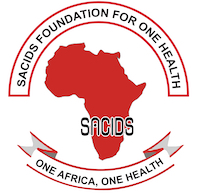Elison E. Kemibala1,3*, Agenor Mafra‑Neto2, Teun Dekker4, Jesse Saroli2, Rodrigo Silva2, Anitha Philbert3, Kija Nghabi3 and Leonard E. G. Mboera
Abstract
Background: Zooprophylaxis is a technique in which blood‑seeking vectors are diverted to non‑host animals in order to lower blood‑feeding rates on human hosts. The success of this technique depends on the host preference of the vector being targeted. The objective of this study was to evaluate the effect of l‑lactic acid (Abate) to divert malaria mosquito, Anopheles gambiae from feeding on human host.
Methods: A 14‑month‑old female goat was treated with Abate, a formulation incorporating l‑lactic acid into a slow‑release matrix. This formulation was applied on the fur of the goat’s back and neck. The treated animal was then pre‑sented to Anopheles gambiae sensu stricto (s.s.) as a prospective host in a semi‑field environment (‘mosquito sphere’) together with either an untreated animal or a human. The number of mosquitoes caught to each host choice offered were compared.
Results: Goat treated with the l‑lactic acid formulation successfully attracted An. gambiae at higher rates (70.2%) than the untreated ones (29.8%). Furthermore, An. gambiae s.s. were attracted to a treated goat at an equivalent degree (47.3%) as to their preferred human host (52.7%), even when the preferred host was present in the same environment.
Conclusions: The findings indicate that human host‑seeking mosquitoes can be diverted into feeding on non‑preferred hosts despite the close proximity of their favoured host, hence reducing chances for the transmission of blood‑borne parasites.
Keywords: Mosquitoes, Malaria, Attractant, l‑Lactic acid, Goats, Human host.






